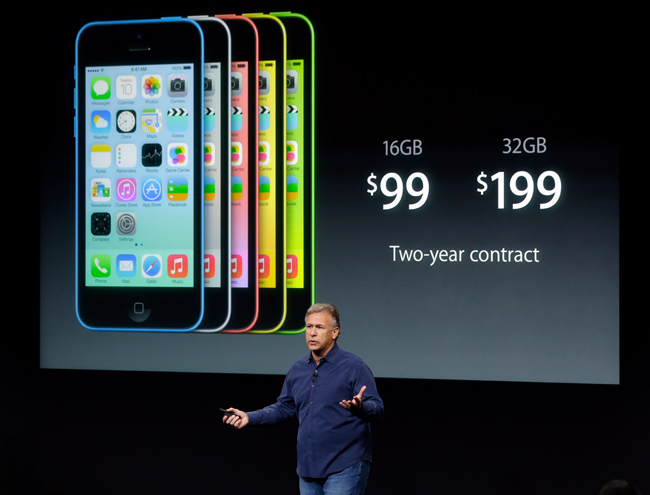Apple uncovered not one, but two new iPhone models Tuesday in Cupertino, Calif. On top of the new iPhone lineup, Apple also unveiled a 64-bit A7 processor, and a fingerprint-detecting home button.
Apple’s latest appeal for consumer attention comes amidst a power vacuum in the mobile device market. With competitors like Samsung and Microsoft fervently vying for a bigger piece of the market-share pie, Apple is in dire need of a splash to sustain its historical success. Aside from improved battery life and Android-bashing jokes, Apple CEO Tim Cook highlighted some promising new features.
To capture a wider range of customers, Apple simultaneously introduced the iPhone 5S and iPhone 5C models. While the matte iPhone 5S will be marketed as a higher end device with a starting price of $199, the “unapologetically” plastic iPhone 5C will target consumers with a tighter budget. Rather than continue to sell older iPhone 5 models at a discount price, Apple will now market the iPhone 5C as its cheapest smartphone product with a price tag of $99. Both devices will go on sale starting Sept. 20.
Color is another notable aspect of the new iPhone sub-generation. The plastic iPhone 5C will sport four vibrantly colored backsides and support an equally bright set of Apple-designed cases. The iPhone 5S will be available in silver, gold and “space gray.” It should bring a more glitzy charm to an older product design.
iOS7, the new native operating system for the iPhone, will now support a 64-bit processor. This is a fairly big talking point for Apple, since no other smartphone can boast this kind of processing “oomph.” But in the context of mobile devices, the 64-bit A7 processor might be overkill. For consumers not playing graphics-intensive games or switching furiously between apps, the increased RAM capacity a 64-bit chipset affords is not that big of a deal.
The A7 chipset will, however, assist in other more crucial functions of the iPhone 5S, particularly the “Touch ID.” This thumb-scanning software is built right into the home button Apple fans are familiar with, and will make security a more fluid experience for mobile users. Purchasing a new song or simply logging onto the iPhone device will now be validated with touch of a user’s fingerprint.
When it comes to innovation, smartphone design is quickly drying up. But Apple does bring some important improvements to its mobile products. Among them is the camera, which now possesses an expanded aperture, a slow-motion capture mode and an M7 motion processor for measuring acceleration and gestural data.
In terms of software, Keynote, Pages and Numbers are now all free apps on iOS7. These will make their debut on the iPad when iOS7 is released for free Sept. 18.
Is there really anything here to set the iPhone apart from its competition? Probably not. Sales of the new iPhone sub-generation will act as a litmus test for Cook and may suggest the future success of Apple in the mobile device market.















